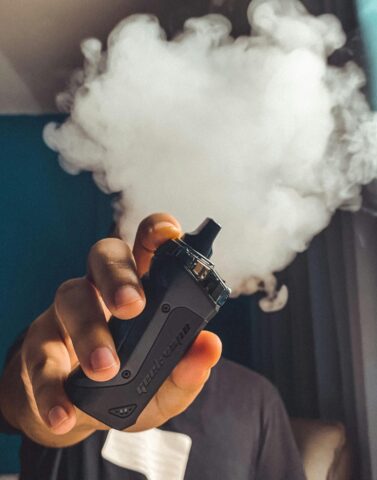By order of Sheriff Darren Weekly, Stage 1 Fire Restrictions are in place for unincorporated areas of Douglas County. Ordinance No. O-012-004 restricts open fires, open burning, and the use of fireworks in the unincorporated areas of Douglas County.
By order of Sheriff Darren Weekly, Stage 1 Fire Restrictions are in place for unincorporated areas of Douglas County. Ordinance No. O-012-004 restricts open fires, open burning, and the use of fireworks in the unincorporated areas of Douglas County.
In observance of Christmas, all Douglas County offices will close at noon on Wednesday, Dec. 24, and will be closed for the entire day on Thursday, Dec. 25, 2025. Offices will reopen at 8 a.m. on Friday, Dec. 26, for normal business. Many County services are available 24/7 by visiting online services.

Your Douglas County Health Department is working to prevent tobacco-related deaths and diseases in our County. Our priorities are to:
 It’s never too late to quit smoking or vaping
It’s never too late to quit smoking or vapingQuitting smoking now improves your health and reduces your risk of heart disease, cancer, lung disease, and other smoking-related illnesses.
Quit-Kits are available for community members at the Douglas County Health Department office (11045 E. Lansing Cir., Suite 300, Englewood, CO 80112) during business hours. The Quit-Kits can be a first step in taking the journey towards a tobacco-free life. Come pick one up today!
E-cigarettes, aka JUULs and vape pens, use a battery to heat up a special liquid into an aerosol that users inhale. It’s not just harmless water vapor. The “e-juice” that fills the cartridges usually contains nicotine (which is extracted from tobacco), propylene glycol, flavorings and other chemicals. Studies have found that even e-cigarettes claiming to be nicotine-free contain trace amounts of nicotine. Additionally, when the e-liquid heats up, more toxic chemicals are formed.
Because the Food and Drug Administration (FDA) has not begun its review of any e-cigarette or its ingredients, nor has FDA issued any standards on the products, e-cigarette composition and effects vary.
E-cigarette liquids, at the bare minimum, have three main components: flavors, sweeteners and solvents. Solvents are substances used to dissolve either nicotine or marijuana-derived compounds including THC or CBD so those ingredients can be inhaled.
Sweeteners include sucralose and ethyl maltol. E-liquid flavors are wide-ranging, and can read like a wine tasting: “notes of vanilla” or “berries and herbal notes.”
All of those ingredients — the solvents, the sweeteners and the flavors — are considered “generally recognized as safe” by the Food and Drug Administration. But that designation refers only to when those compounds are consumed as food. The ingredients take on different properties when heated into an aerosol, which typically contains nicotine, and little is known about the effects those ingredients have on the human body when inhaled.
E-cigarette aerosol can also contain other chemicals like formaldehyde and metal particles such as nickel, lead, chromium, tin, and aluminum. Breathing in e-cigarette aerosol can deliver these chemicals to your lungs where they can cause damage.
Unfortunately, no. Despite the name, vaping doesn’t make water vapor. It actually creates an aerosol (or mist) that contains small particles of nicotine, metal and other harmful substances. You breathe these particles into your mouth from the mouthpiece, where they go down your throat and into your lungs.
Many people think vaping is less harmful than smoking. While it’s true that e-cigarette aerosol doesn’t include all the contaminants in tobacco smoke, it still isn’t safe. Here are just a few of the reasons why:
E-cigarettes’ biggest threat to public health may be this: The increasing popularity of vaping may “re-normalize” smoking, which has declined for years. Reversing the hard-won gains in the global effort to curb smoking would be catastrophic. Smoking is still the leading preventable cause of death and is responsible for over 480,000 deaths in the U.S. each year. (Information provided by the CDC.)
While some vapes do not contain nicotine or THC, most do. In fact, 100 percent of Puff Bar and Juul products – teens’ top choices for vaping – contain nicotine. Both of these products use nicotine salts that allow for much higher levels of nicotine compared to earlier generations of e-cigarettes.
Plus, studies have shown that most vaping products labeled “nicotine-free” actually contain trace amounts of nicotine. For teens who don’t want to become addicted to nicotine, the safest option is not to vape at all.
It can be very hard to tell. Not only do manufacturers make discreet devices that resemble flash drives, highlighters and more, but vape also does not have a strong odor that is often a giveaway for parents and teachers. Plus, many of today’s products are designed for one-time use, making them easy to dispose of and conceal.
The best strategy is to talk to your kids.
Talking to the young people in your life about tobacco use can be difficult, but research shows that having these tough conversations can make a difference in their choices to use substances. Connecting with the young people in your life to discuss these topics, whether you’re a family member, teacher, coach, or anyone else with a meaningful relationship with a young person, can influence their decision to make a healthier choice.
According to the American Lung Association:
There are two main types of smokeless tobacco used in the U.S., chewing tobacco and snuff.
E-cigarettes should NOT be placed in your household trash or recycling. The lithium batteries can become damaged and cause fires. Nicotine is toxic and poses a risk to both workers and the environment.
Contact the CDPHE Hazardous Materials and Waste Management Division’s Customer Technical Assistance at (303) 692-3320 or [email protected] to get answers about nicotine-containing hazardous waste.
E-cigarettes can be disposed of on Wednesdays and Saturdays from 8:00 a.m. to 2:00 p.m. by appointment:
Rooney Road Recycling
151 S. Rooney Rd.
Golden, CO 80401
(303) 316-6262